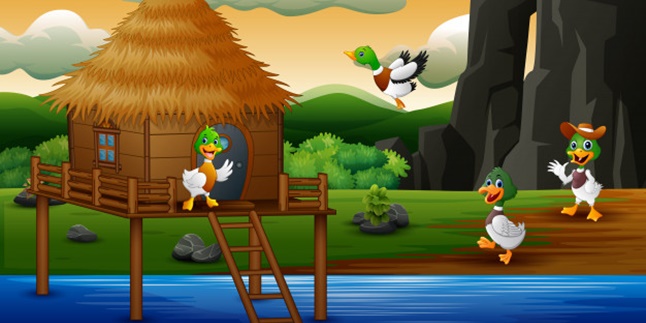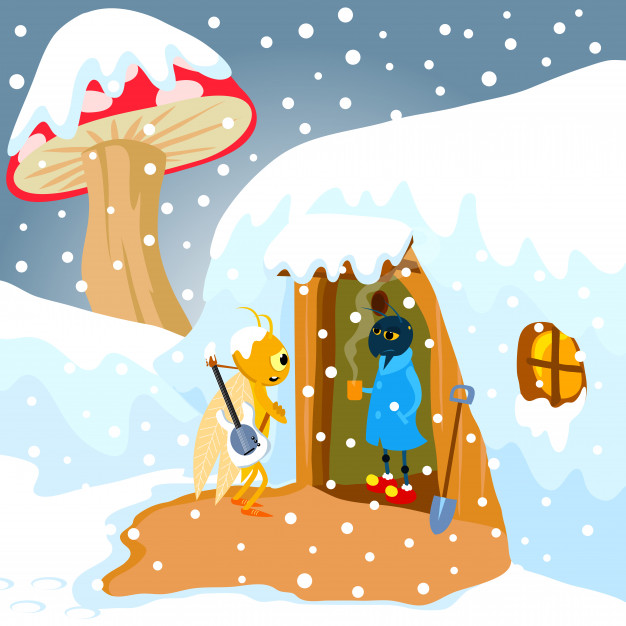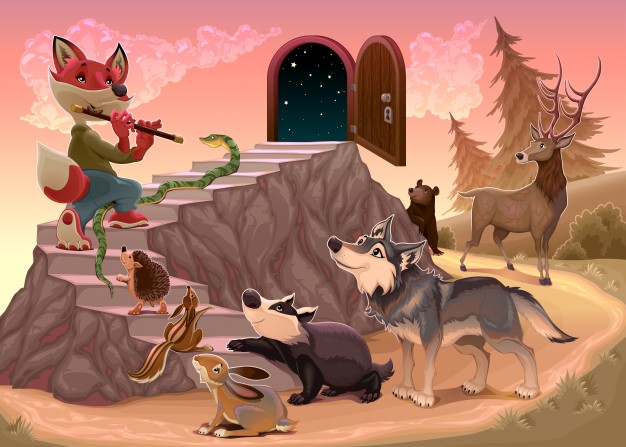9 Safe Ways to Have a Normal Delivery, to Reduce Pain
For those of you who will become a mother for the first time, here are a series of ways to have a normal delivery that you can use as a reference. Read the review below.

Kapanlagi.com - Fables are one of the popular and well-liked types of stories. This is because fables are stories that can be enjoyed by anyone of all ages. Generally, we understand that fables are stories with animal characters. In fables, each animal character can behave and think like humans. This is what makes fables unique and different from other types of stories.
In addition, the definition of fables also includes stories that are entertaining and full of moral messages. It is no wonder that fables are often bedtime stories read by parents to their children. The story of "Si Kancil" is one of the most popular examples of Indonesian fables. This fable not only has a simple and interesting story, but also funny characters and many moral messages in it.
To understand the definition of fables more deeply, read the following review that has been summarized from various sources.

(credit: freepik)
Basically, the definition of a fable includes stories with animal characters behaving like humans. However, because they are generally intended for children, fables must have simple, entertaining stories that contain moral messages. Fables should be simple to make it easier for children to understand and practice the moral lessons.
In addition, in fables, each animal character not only behaves like a human but also has traits or characteristics that are similar to humans. For example, being kind, clever, greedy, arrogant, and so on. These human-like characters are very important because they convey moral values in fables. Some of the moral values often conveyed in fables are responsibility, honesty, discipline, trustworthiness, and others.
As mentioned in the definition of fables, these animal stories are specifically made for children. Because fables are different from most types of stories that contain more entertainment elements. Fables must contain a balance of entertainment and moral learning. Moral learning in fables is conveyed through various things such as the nature and attitude of each animal character in solving problems.

(credit: freepik)
However, fables are different from other types of stories. Fables that are specialized for children have several characteristic features that distinguish them from other stories. The characteristics of fables are as follows.
1. Have animal characters with human-like traits and attitudes.
2. Short and simple stories, suitable for children's reasoning abilities.
3. Fables contain moral values that are related to human attitudes in real life.
4. Character traits are explained directly and in detail.
5. The moral message in fables is conveyed directly and clearly.
6. The language style is simple and easy to understand.
7. Uses an oral storytelling style.
8. Often discusses negative human attitudes, such as discrimination and injustice.
In addition to the understanding of fables and characteristics mentioned above, the difference between fables and other types of stories can also be seen from the aspect of structure. Fables have a distinctive structure consisting of four parts. The four parts of the fable structure are as follows:
1. Orientation
Orientation is the beginning part of the fable story. In this part, the fable story introduces the characters, story, setting, and time.
2. Complication
The second part of the structure is the complication or climax of the story. In the complication part, the main character will start facing the peak of the problem. This part can be said as the essence of the fable story.
3. Resolution
The resolution part of the fable story contains the process of problem-solving by the main character. Usually, the problems in the fable will be solved by the main character in a creative and unique way.
4. Coda
The last part of the structure is the coda. Generally, the coda is the ending part of the fable story. The coda part will explain the changes that occur in each character. In addition, the coda part will also convey the message or moral lesson contained in the fable. All of these will be conveyed clearly and straightforwardly.

(credit: freepik)
The definition of fable is a short and simple story that contains a moral message with animal characters. Therefore, as mentioned earlier, the language in fables should be simple and generally presented in spoken language. In addition, it turns out that fables also apply several other language rules. What are they? Here is the explanation.
1. Use of Verbs
As we know, verbs are broadly divided into two types, namely transitive verbs and intransitive verbs.
1) Transitive verbs are verbs that have objects. Examples in fables include: the deer being chased by a crocodile.
2) On the other hand, intransitive verbs are verbs that do not have objects. Examples in fables include: the buffalo is bathing in a mud puddle.
2. Use of Place and Time Adverbs
The use of place and time adverbs is useful for completing the story. Examples of their use in fables: In the evening, the rabbit walks in the garden.
3. Use of Articles
In fables, the use of articles such as "si" and "sang" is common. Examples of the use of articles in fables: si kancil (the deer), sang raja hutan (the king of the forest), and so on.
4. Use of Conjunctions
The use of conjunctions such as lalu (then), kemudian (next), and akhirnya (finally) will make it easier for children to understand the story. Examples in fables include: Then, the rabbit apologized and promised not to do it again.
In general, fables are divided into two types, namely classic fables and modern fables. The definition of classic and modern fables is as follows.
1. Classic Fables
Classic fables are tales that have existed for a long time and have been passed down from generation to generation orally. Therefore, it is very difficult to determine the exact time when these fables were created, as well as who the creator was. Examples of classic fables include the story of the Mouse Deer and the Crocodile, the Crow and the Eagle, the Buffalo and the Bird, and others.
2. Modern Fables
Modern fables are tales with animal characters that have emerged more recently. Therefore, it is easier to trace their time and author.
Those are some explanations about the definition of fables, as well as their characteristics, types, and others. Hopefully, it is useful and can broaden your knowledge.
(kpl/psp)
Cobain For You Page (FYP) Yang kamu suka ada di sini,
lihat isinya
For those of you who will become a mother for the first time, here are a series of ways to have a normal delivery that you can use as a reference. Read the review below.
Chubby cheeks often occur due to excess fat that causes certain areas of the body, including the cheeks, to appear fuller. Here are the causes of chubby cheeks that need to be known.
This is the interpretation of dreams of menstruation according to Islam and Javanese primbon. What are the interpretations of these dreams? Let's check it out, KLovers.
Conduction is something very important to learn. Because the conduction process is closely related to everyday life.
For you beginners, learning photography is highly recommended to hone your skills. Knowing the types of photography is also important to expand your knowledge about photography. What are the types?
Yellow eye color occurs in the outer area of the cornea called the sclera. Where the normal clear white color changes to yellow. This is the cause of yellow eyes that need to be known.
Firma is one form of business entity that is a partnership. What is the complete explanation? Find out here.
You also need to know that there are various types of cameras in this world. Knowing the types of cameras is important for those of you who want to buy a camera. What are they?
Here are some touching words from Wira Nagara, about love and coffee. Let's check it out KLovers.
Biography is one of the interesting and popular readings. Therefore, it is important to understand what a biography is. Check out the following review.
The causes of a skinny body can occur due to various triggering factors but are often rarely realized. Here are some causes of a skinny body that need to be known.
It is important for you fashion enthusiasts to know the types of women's hats that are suitable when you wear them. So that you won't be confused, here are a series of women's hat types that you need to know.